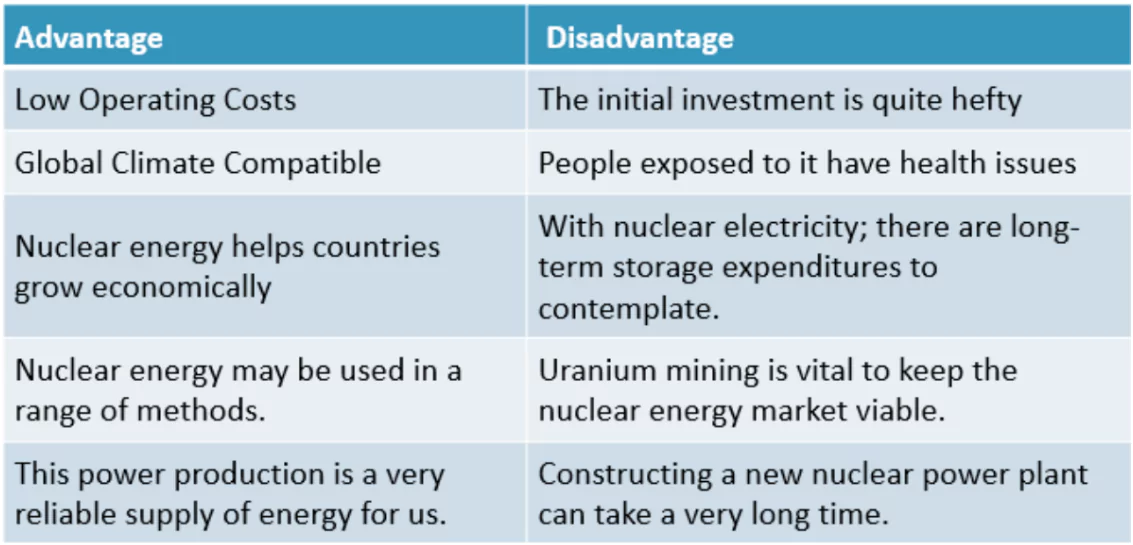Google announced its first agreement to buy nuclear energy from Small Modular Reactors (SMR) developed by Kairos Power.
Small modular reactors (SMRs)
- These are a new type of nuclear reactor.
- It can produce electricity as low as 5 MWe to as high as 300 MWe per module.
- It can also be used for various purposes like desalination and facility heating.
- It is safer and less expensive than traditional nuclear power plants.
|
- The project aims to generate 500 MW of carbon-free power by 2030.
Enroll now for UPSC Online Classes
About Nuclear Power
- Nuclear power uses nuclear reactions to produce electricity.
- This energy can be generated through nuclear fission, nuclear decay, and nuclear fusion.
- Current Methods: Most nuclear power today comes from fission of uranium and plutonium in nuclear power plants.
- Nuclear decay is used in specific cases, like powering space probes.
- Future Potential: Controlled fusion power could solve some resource limitations of fission power but is not expected to be available commercially in the near future.
- Nuclear Energy
- Nuclear energy is released from the nucleus of atoms, composed of protons and neutrons.
- Types of Nuclear Reactions:
- Fission: Energy is produced when the nucleus of an atom splits into smaller parts.
- Fusion: Energy is generated when atomic nuclei combine or fuse together.
- Current Use of Nuclear Energy
- Fission: Today, nuclear energy used for electricity generation comes from the process of fission.
- Fusion: Electricity generation from nuclear fusion is still under research and development.
Advantages and Disadvantages of Nuclear Energy

Why Big Tech Companies Want Nuclear Power?
Big Tech companies like Google, Microsoft, Amazon and OpenAI are interested in using nuclear power for a few reasons:
- High Energy Needs
- Running Artificial Intelligence (AI) requires a lot of energy.
- Data centres, which store information for these companies, and other online operations use a lot of power.
- Google’s greenhouse gas emissions rose by 13% in 2023.
- Clean Energy Source
- Big Tech companies want to use clean energy sources to avoid pollution.
- Google views nuclear energy as clean, reliable, and carbon-free, unlike solar power.
- Reliable Power Source
- Nuclear power plants can generate electricity 24/7, unlike solar or wind power which depend on the weather.
- SMRs are smaller and easier to deploy, making them suitable for faster use.
Check Out UPSC NCERT Textbooks From PW Store
Is Nuclear Energy Clean?
There is debate about whether nuclear energy is truly clean.
- Accidents: There have been some serious nuclear accidents in the past, such as Chernobyl and Fukushima.
- While these incidents caused environmental damage and public fear, nuclear energy is still viewed as a potential clean energy source due to its high potential.
- Waste: Nuclear power plants produce radioactive waste that needs to be stored safely for thousands of years.
- Groups like ‘Friends of the Earth’ oppose nuclear energy, calling it dangerous and costly.
- They highlight the risks of accidents, leaks, and building nuclear plants in earthquake-prone areas.
- Safety Concerns: Some people worry about the safety of nuclear power plants, especially in areas prone to natural disasters
U.S. Government’s Stand on Nuclear Energy
- Supporting Nuclear Power: The U.S. sees nuclear energy as essential for reducing carbon emissions and staying competitive with China and Russia.
- Nuclear Leadership: The U.S. Department of Energy believes nuclear energy helps prevent 500 million metric tons of carbon dioxide emissions annually, equivalent to removing 100 million cars from the roads.
![]() 23 Oct 2024
23 Oct 2024


